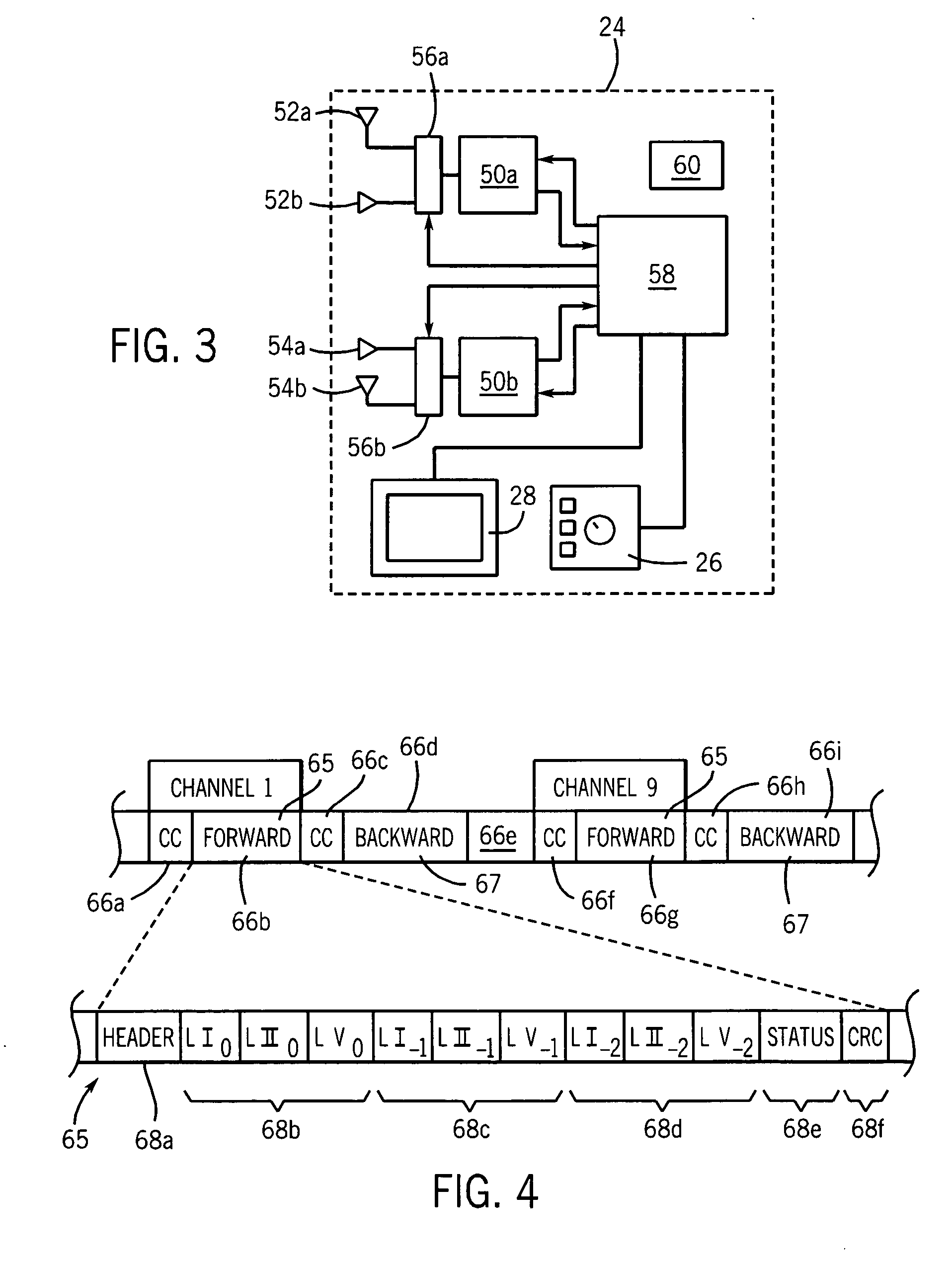Wireless in-bore patient monitor for MRI
a patient monitor and in-bore technology, applied in the field of electronic patient monitors, can solve the problems of long cables, difficult to reach the patient, and the difficulty of conventional radio transmission in the mri environment, and achieve the effect of low error rate and high bandwidth at practical transmission power
- Summary
- Abstract
- Description
- Claims
- Application Information
AI Technical Summary
Benefits of technology
Problems solved by technology
Method used
Image
Examples
Embodiment Construction
[0043] Referring now to FIG. 1, an MRI magnet room 10 containing an MRI magnet 14 may have shielded walls 12 blocking and reflecting radio waves. The MRI magnet 14 may have a central bore 16 for receiving a patient (not shown) supported on a patient table 18. As used henceforth, bore shall refer generally to the imaging volume of an MRI machine and should be considered to include the patient area between pole faces of open frame MRI systems.
[0044] During the MRI scan, the patient is held within the bore 16 and may be monitored via wireless patient unit 20 attached to the patient or patient table 18 and within the bore 16 during the scan. The patient unit 20 transmits via radio waves 22 physiological patient data and status data (as will be described) to processing unit 24 outside the bore 16 useable by personnel within the magnet room 19. The processing unit 24 typically will include controls 26 and a display 28 providing an interface for the operator, and may be usefully attached ...
PUM
 Login to View More
Login to View More Abstract
Description
Claims
Application Information
 Login to View More
Login to View More - R&D
- Intellectual Property
- Life Sciences
- Materials
- Tech Scout
- Unparalleled Data Quality
- Higher Quality Content
- 60% Fewer Hallucinations
Browse by: Latest US Patents, China's latest patents, Technical Efficacy Thesaurus, Application Domain, Technology Topic, Popular Technical Reports.
© 2025 PatSnap. All rights reserved.Legal|Privacy policy|Modern Slavery Act Transparency Statement|Sitemap|About US| Contact US: help@patsnap.com



